About 20km from the center of Hanoi, Kim Lan pottery village (Kim Duc commune, old Gia Lam district, now Bat Trang commune, Hanoi) is nestled along the Red River with a lot of alluvium, just a stone's throw from Bat Trang village, the canal named Bac Hung Hai.
This is a traditional craft village with a long history, known as a place for producing ceramics for the ancient Thang Long citadel. The pottery industry here began in the 8th century and flourished until the 18th century.
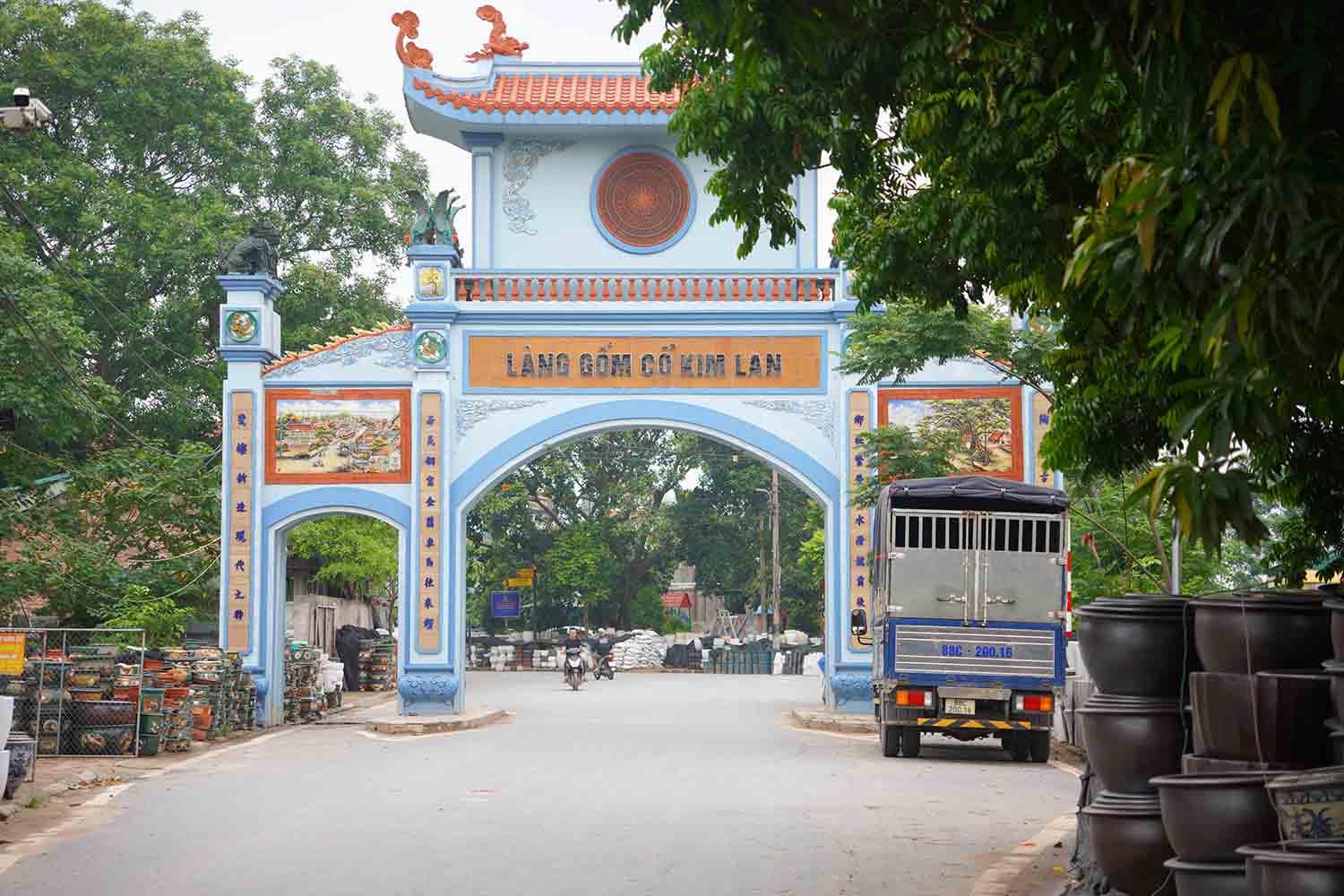
Considered the "prince sleeping in the forest" next to Bat Trang village, Kim Lan pottery has also been listed as precious products with silk, brocade, pearls, and pearls since the 8th century.
With an age longer than the entire Bat Trang pottery village, Kim Lan is considered the cradle of the pottery civilization in the Red River Delta.
According to archaeologists and history, the pottery craft in Kim Lan has existed for more than 1,000 years. Today, Kim Lan still retains the identity of an ancient village with a long tradition of pottery making.
What makes the difference of Kim Lan ceramics is that the product is not elaborate in details but simple, harmonious, creating convenience. Kim Lan pottery village mainly produces products for daily life.
Following the road leading to the village gate, you can find products such as vases, ceramics, canh, tiles, facades, incense sticks to cups, bowls, tofu... from popular to high-end displayed on both sides of the road, looking eye-catching and urging exploration.
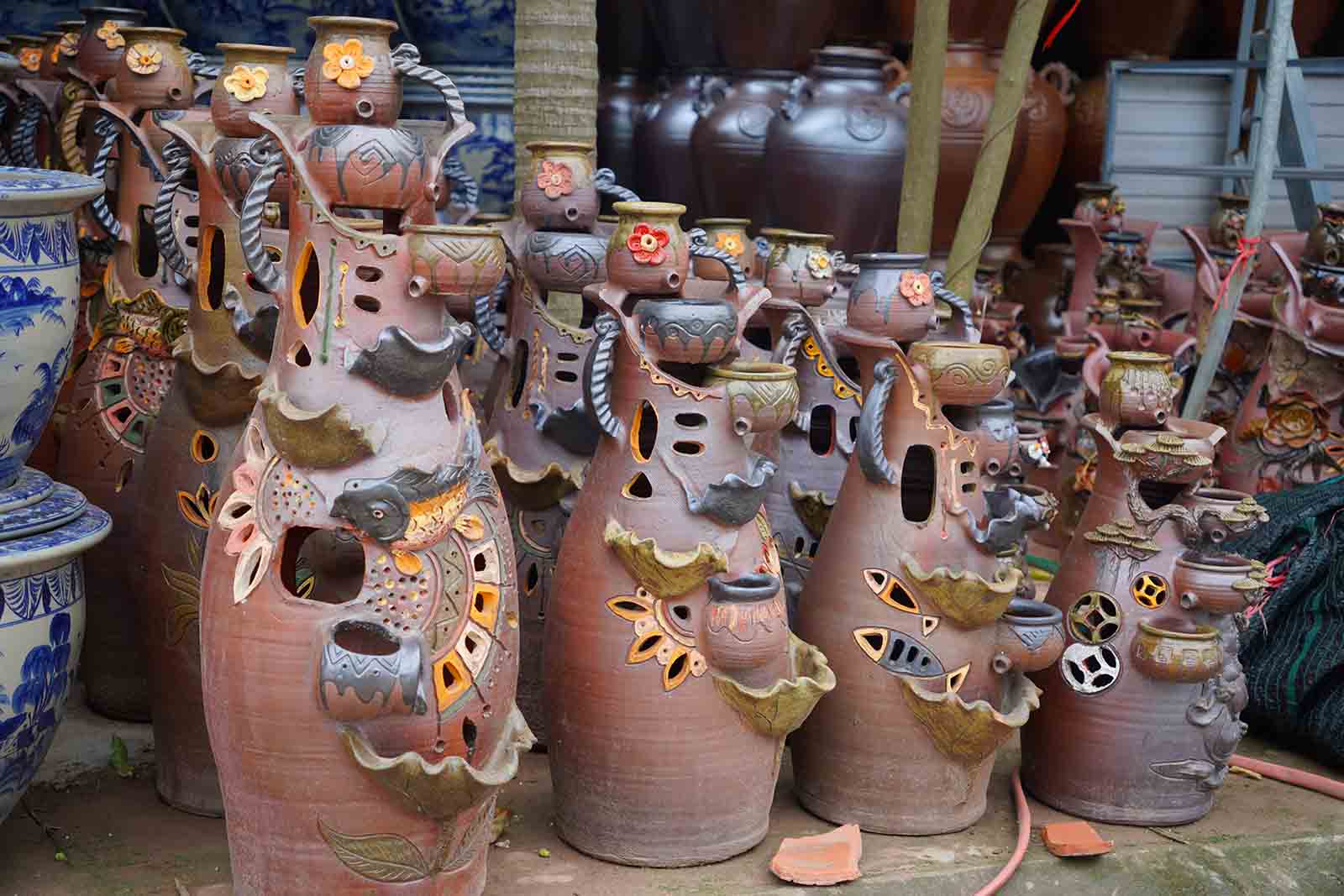
According to the villagers, Kim Lan pottery is unique because it has the ability to be accelerated when exposed to light, the secret to creating the transition of the pottery is in the precise materials and finishing techniques.
The soil must be refined and completely removed from the impurities before being heated to a temperature of nearly 1,300 degrees Celsius. When meeting the standards, the pottery is transparent like an LED bulb; if the temperature is lower, the light will turn yellow or cannot penetrate.
Artisan Pham Dinh Bon shared: "A potter not only needs to be skillful but also needs to go through many years of labor, summarize experience and have a deep understanding of the characteristics of soil, ferment and fire to make pottery products".
To produce quality pottery products, it is necessary to focus on each stage, from selecting clay materials, additives, pouring molds, smelting, screening products that meet standards to the stages of painting, decorating patterns, patterns and preserving.
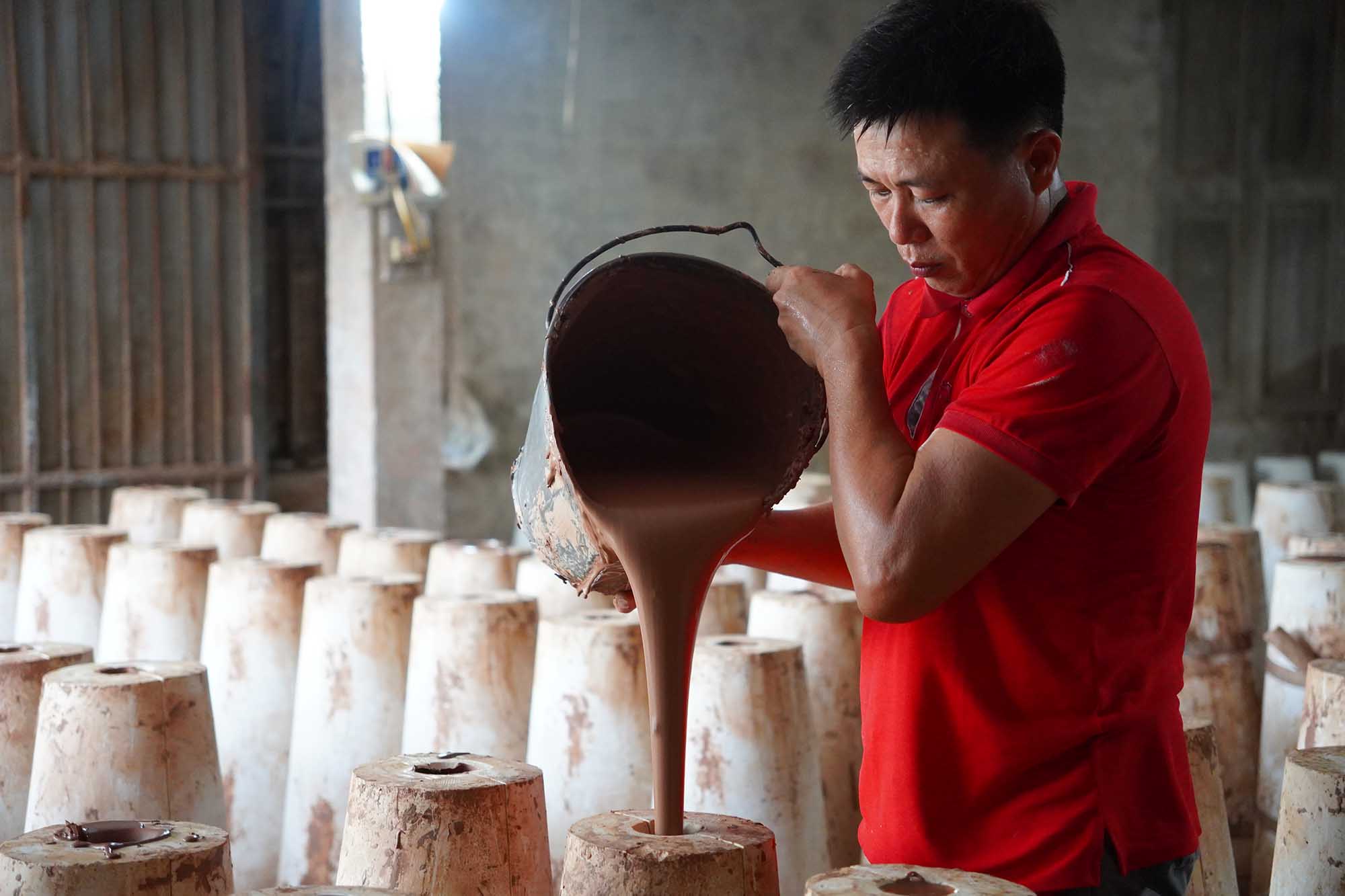
The beauty of Kim Lan ceramics is the rusticity, closeness but still exudes elegance and charm.
To make that pottery product is not a simple process, Mr. Nguyen Van Minh - Binh Thy facility said: "Making this pottery is very hard, you have to be patient, endure hard to last and survive".
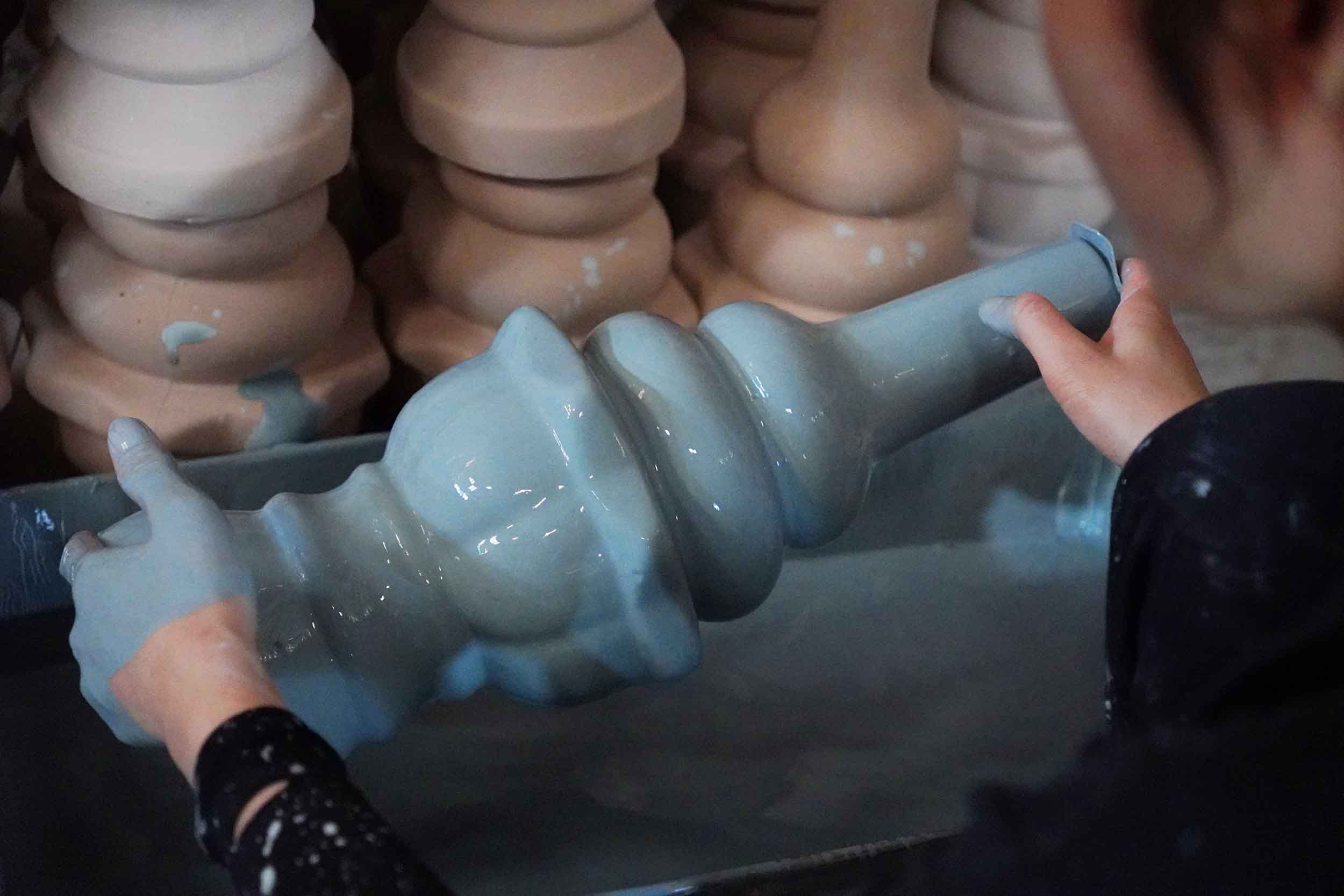
Not only the veterans, but also the younger generation of the village enthusiastically participated in the production of traditional pottery products.
"Since I was a child, my parents have taken me to work as a potter, so I have gradually become accustomed to it, I keep working until now, every time I make the products that I like, I feel excited and want to do more" - Ms. Nguyen Mai (24 years old) - Huong Lien facility shared.

There are many shuttle buses entering and leaving the village to transport products to provinces and cities. Not only consumed in the domestic market, Kim Lan ceramic products are also exported to countries such as Japan and Korea.
With historical, cultural and scientific values, the Kim Lan pottery has been included in the list of National Intangible Cultural Heritage by the Ministry of Culture, Sports and Tourism since January 23, 2025.
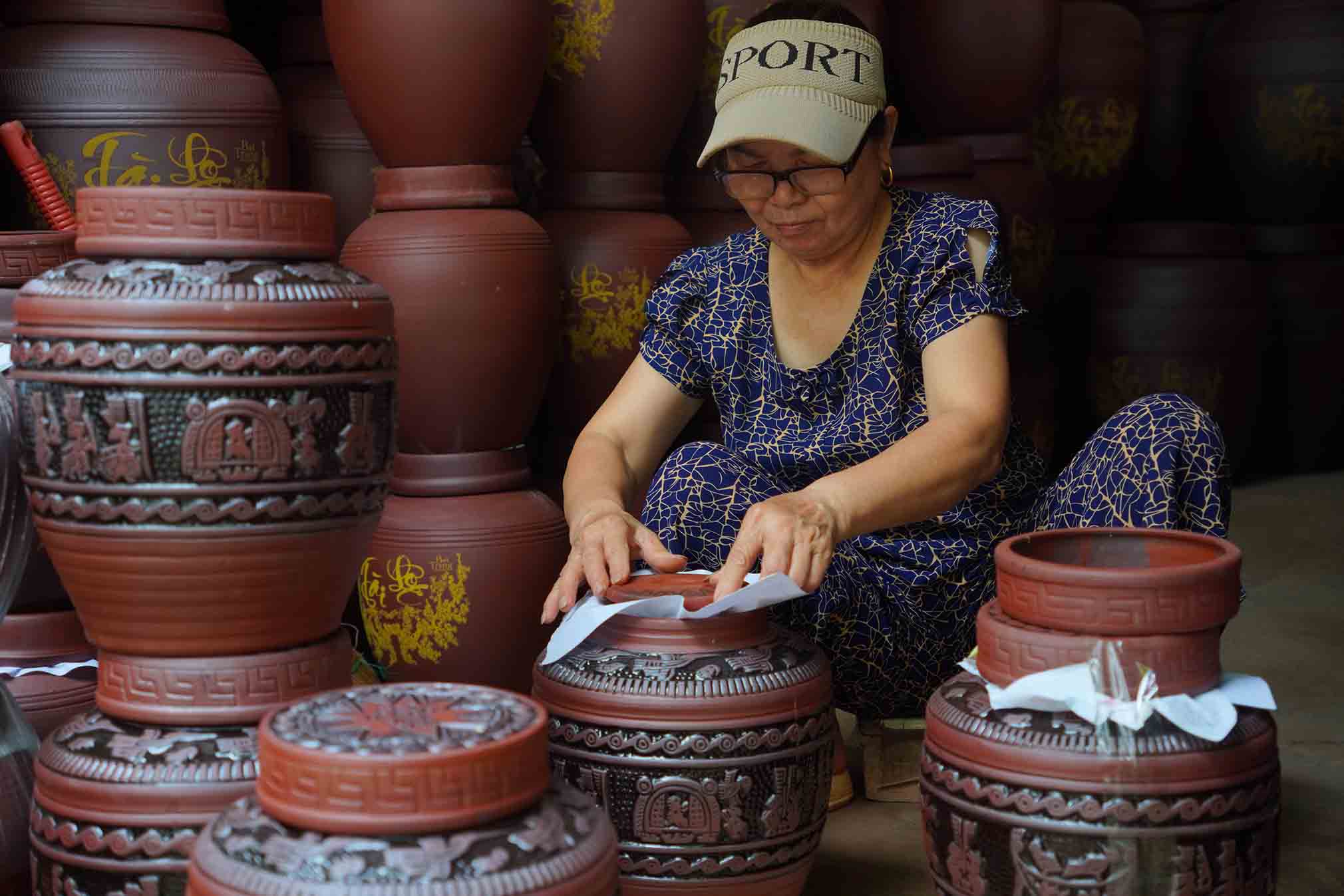
Kim Lan pottery village is still making efforts to preserve and develop traditional crafts, with many diverse ceramic products with high applicable and artistic value.
The people of Kim Lan village are always proud that the traditional products of the craft village are increasingly replicated and many people are known for the unique quality they bring.






